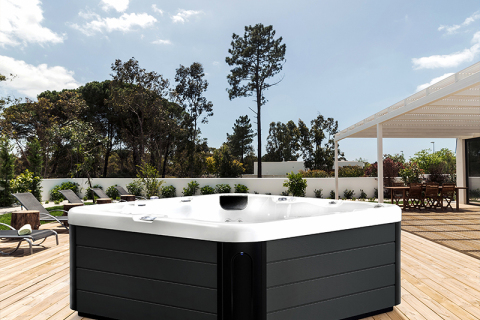
- Home
- >
News
Modern swim spa hot tubs are designed with safety in mind. High-quality products often feature non-slip textured floors, high-friction materials, or special sandblasting processes to effectively reduce the risk of slipping when standing.
Simply reducing the frequency of whirlpool spa hot tub use doesn't necessarily result in significant savings. True savings come from properly controlling and optimizing usage patterns, heating strategies, and maintenance procedures.
For private home use, weekly maintenance is recommended, and testing is recommended once or twice a year. For shared use by multiple households, moderate maintenance is recommended, and testing is recommended every six months. For commercial facilities (hotels, gyms, spas), monthly or quarterly testing is mandatory.
Not all sites are suitable for the standard thickness. In some cases, the foundation should be thickened as needed. 1. Soft or non-bearing soil · Sand, clay, or landfill; · Underlying pipelines, old structures, or voids. It is recommended to increase the thickness to 5–6 inches (12–15 cm) and use a double layer of steel mesh (8–12 mm diameter on each layer).
· It is recommended that users add approximately 60-85 grams of dichlorodichlorobenzene granules (based on a 1,300 liter water volume) before daily use; · If using trichlorodichlorobenzene or liquid chlorine, recalculate based on the available chlorine content; · Maintain a free chlorine concentration of 3-5 ppm is ideal; · Test and refill as needed after each use.
Many users experience skin irritation, itching, redness, and swelling when water quality is unbalanced (especially when the pH is too acidic or when there is excess residual chlorine). Baking soda, as a weakly alkaline substance, has excellent anti-irritant properties. Its mild neutralizing properties can alleviate skin problems caused by disinfectant residue or acidic imbalances in water.
Coughing is a defensive reflex of the respiratory tract, intended to expel irritants, foreign matter, allergens, or excessive secretions from the airways. When someone coughs in a whirlpool spa hot tub, it often indicates that an external stimulus is affecting the airway mucosa or the lungs' sensory system.
The frame design of an outdoor spa hot tub is based on "bottom-load bearing." The bottom ground plane typically utilizes reinforced steel frames and support legs, capable of bearing the weight of the unit and the weight of people in use. The side structures serve only to maintain the integrity of the tub and are far less resistant to compression than the bottom.
A whirlpool spa hot tub that can truly accommodate seven people is typically approximately 2.2 meters by 2.2 meters, requiring at least 5 square meters of floor space. Including the surrounding space, the recommended floor space is 7-8 square meters.
A tub can fit through a doorway smoothly if one of the following conditions is met: · Doorway width ≥ the tub's dimensions on either side + cushioning ≥ 100 cm; · Height ≥ the tub's longest side (usually width or length); · The path is straight and unobstructed, with a turning radius that allows the unit to pass through at an angle; · Doorframes and guardrails can be removed to expand the space; · An alternative to hoisting is available.
Yes, lowering the temperature of an outdoor spa hot tub can save money. These savings are reflected not only in your electricity bill but also in equipment longevity, water quality maintenance, and energy efficiency.
· Heating time is affected by multiple factors: water volume, initial temperature, power, environment, and insulation structure. · Typical heating time: In winter, heating from 10°C to 38°C takes approximately 4-5 hours (2kW unit). · Practical Tips: Book in advance, maintain a tight seal, and choose the right climate.












